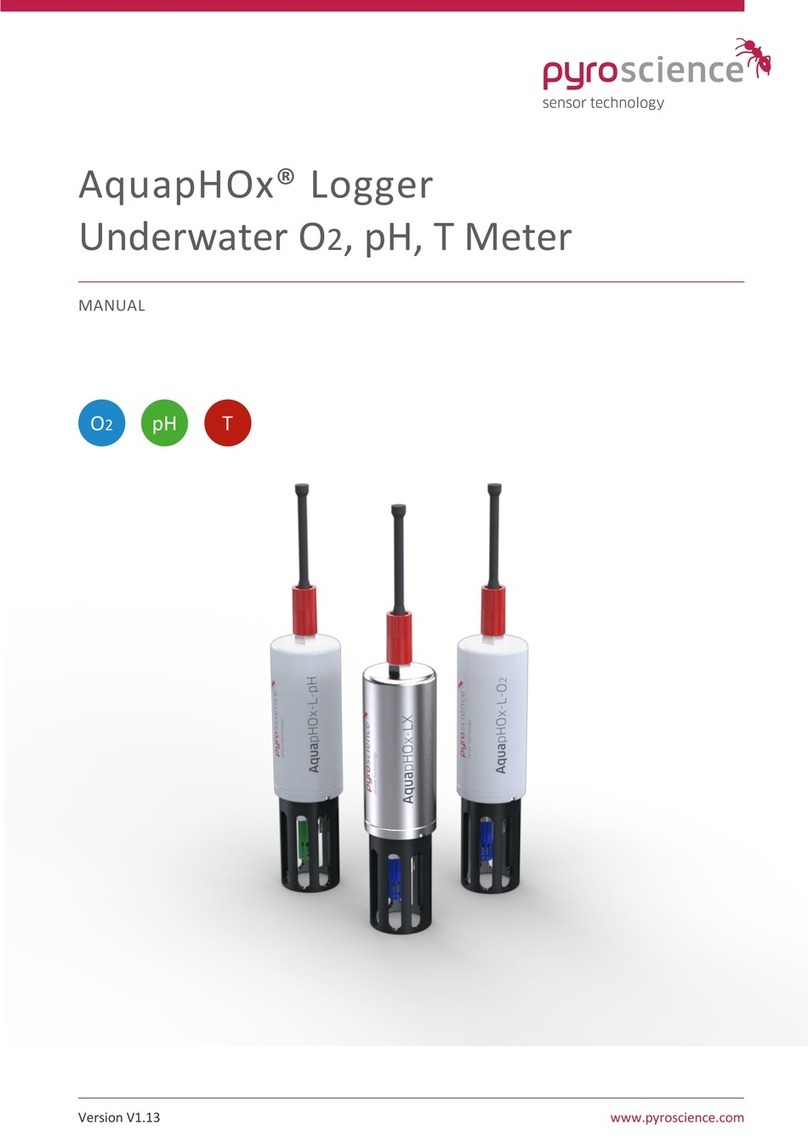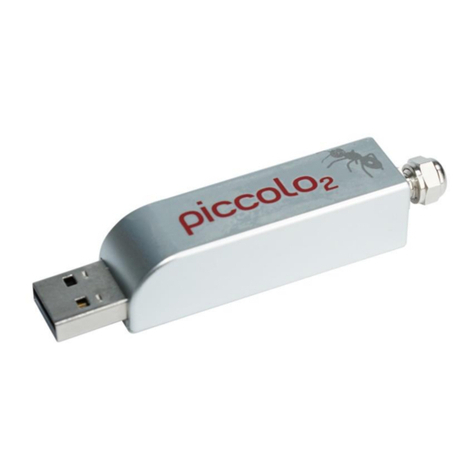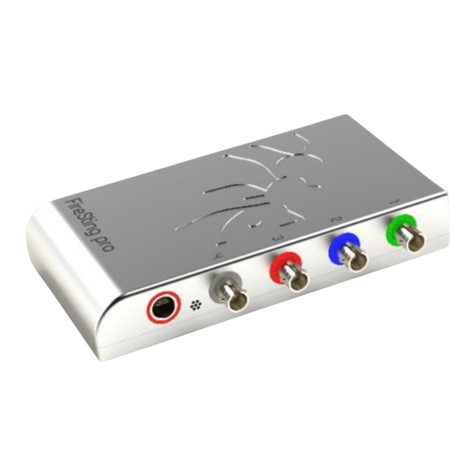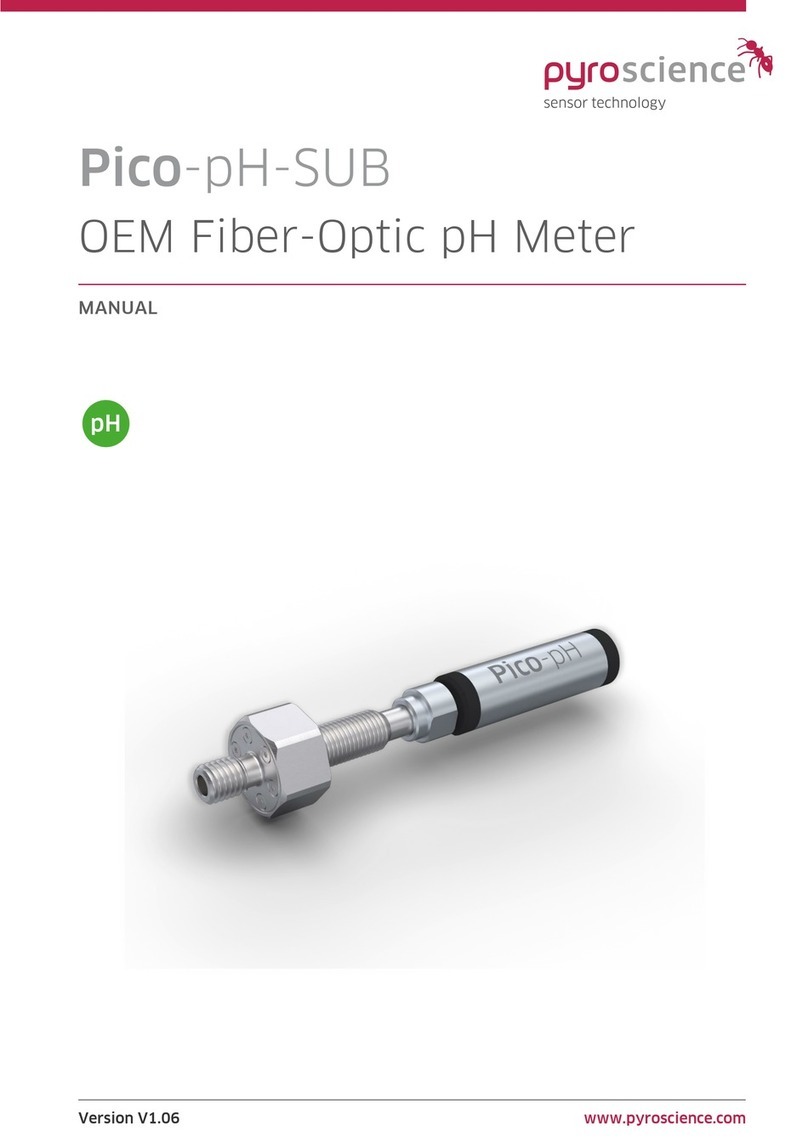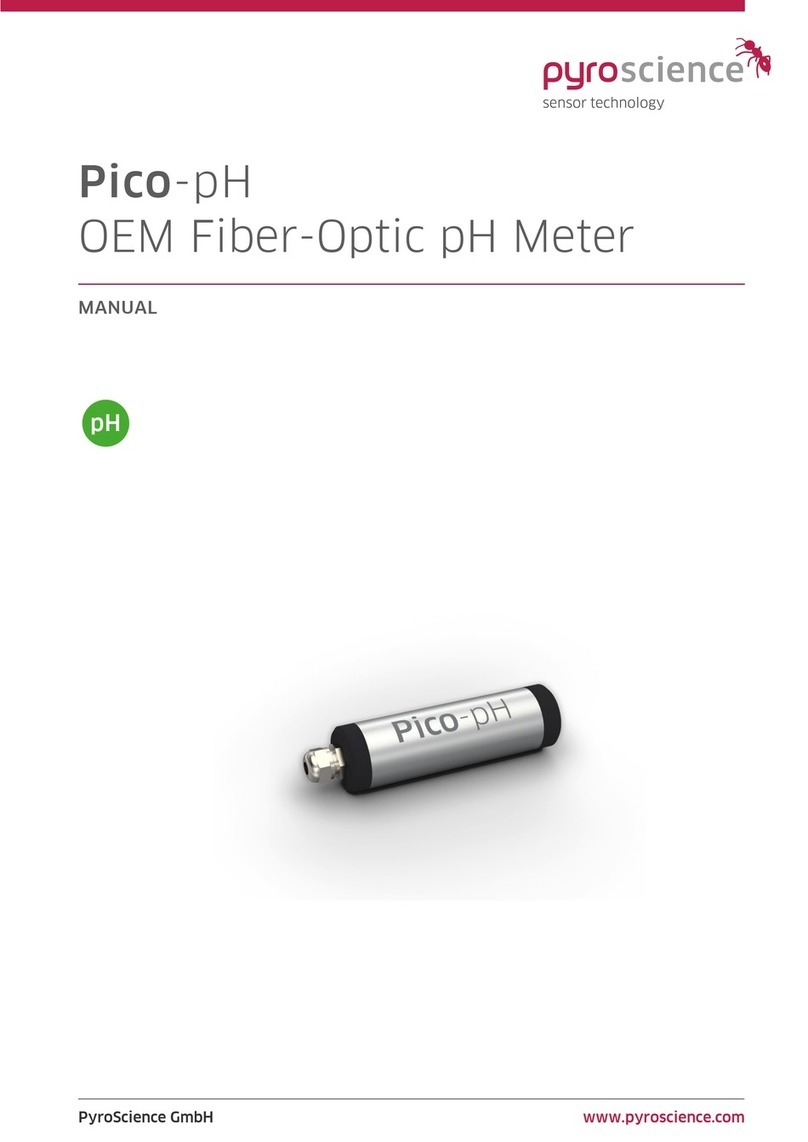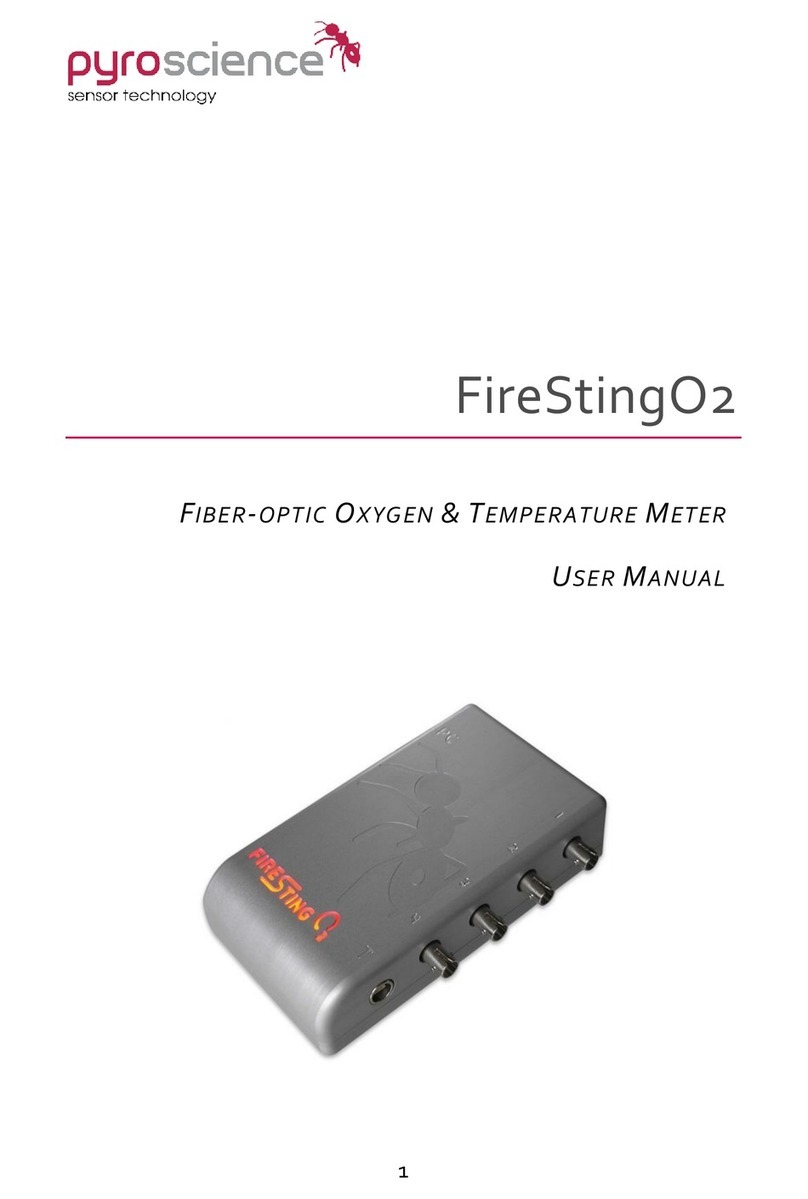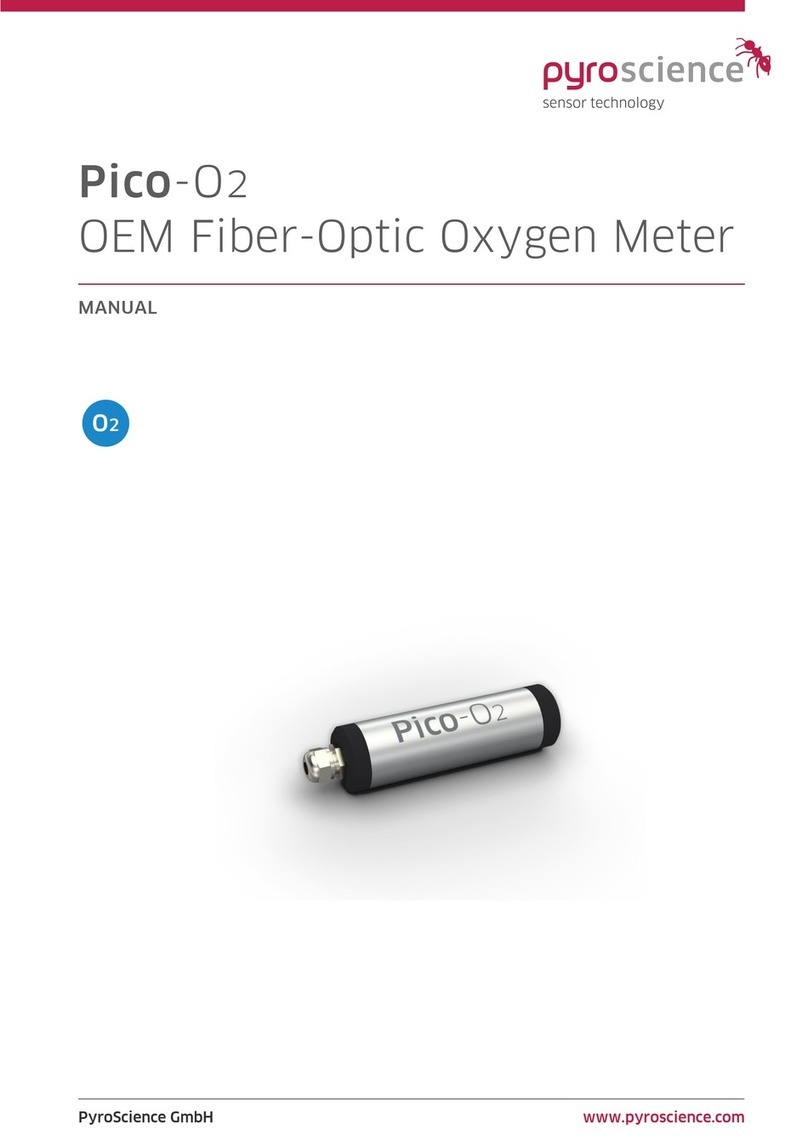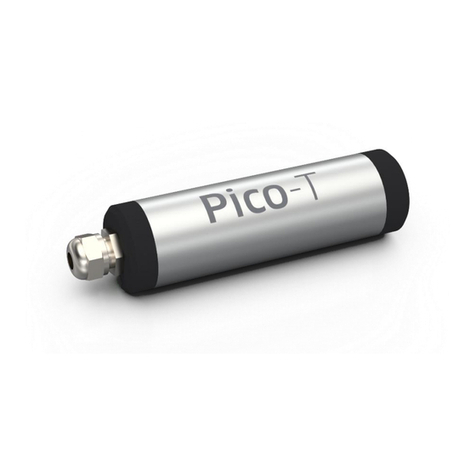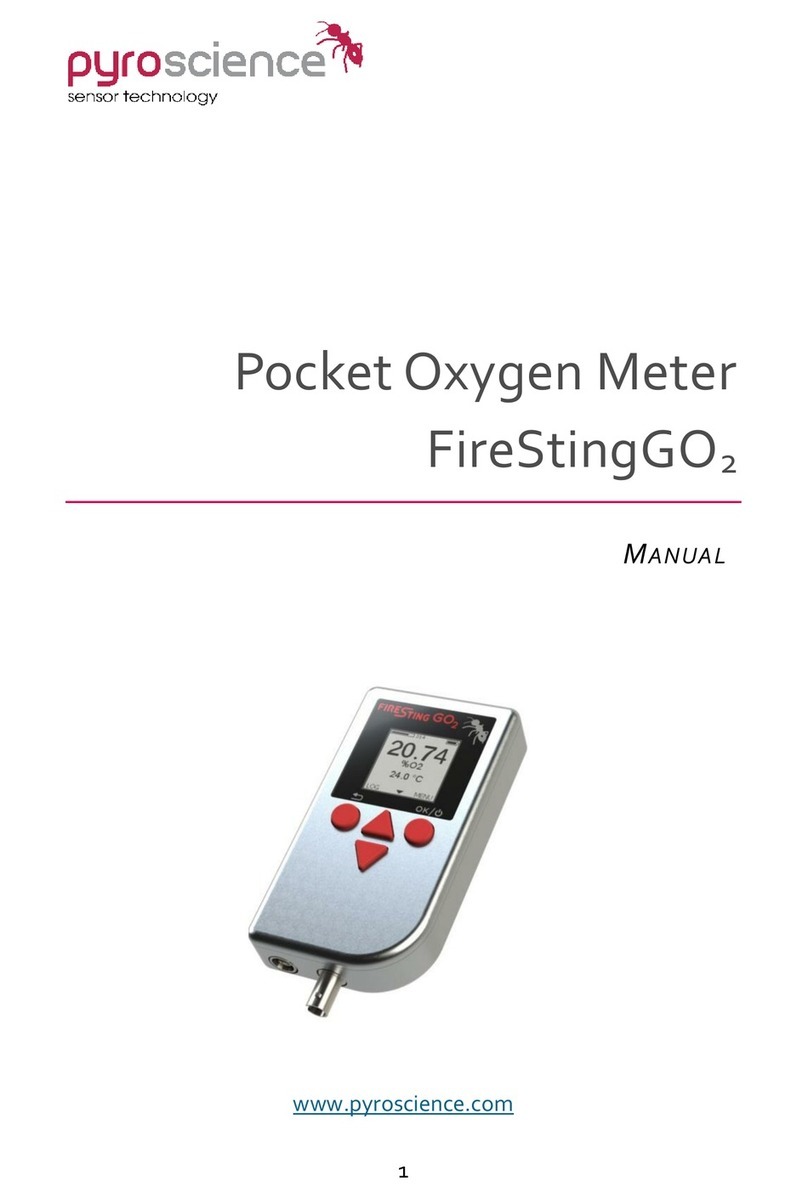
Pico-O2-SUB | Manual
© PyroScience GmbH 3
TABLE OF CONTENT
1Introduction .....................................................................................................................................5
2Overview..........................................................................................................................................7
2.1 Mounting of fiber connector in the housing ........................................................................7
2.2 Optical port for O2 sensors.........................................................................................................8
2.3 External temperature sensor......................................................................................................9
2.4 Status LED .......................................................................................................................................10
2.5 USB interface cable .....................................................................................................................11
3Option 1: Operating the Module with Pyro Workbench.................................................... 12
3.1 Installing the software Pyro Workbench............................................................................12
3.2 Using the software Pyro Workbench ...................................................................................13
4Option 2: Operating the module with Pyro Developer Tool ............................................ 14
4.1 Installing the software Pyro Developer Tool....................................................................14
4.2 Using the software Pyro Developer Tool ...........................................................................15
5Option 3: Simplified Custom Integration............................................................................... 16
5.1 Configuring the Module using PyroScience Software ...................................................16
5.2 Electrical Connector for Custom Integration.....................................................................16
5.3 Configuration of the Serial Interface....................................................................................17
5.4 Communication Protocol ...........................................................................................................18
5.4.1 General Definitions.........................................................................................................18
5.4.2 MEA –Trigger Measurement ......................................................................................19
5.4.3 CHI –Calibrate oxygen Sensor at ambient air ....................................................21
5.4.4 CLO –Calibrate oxygen Sensor at 0% (anoxic)....................................................22
5.4.5 SVS –Save Configuration Permanently in Flash Memory..............................22
5.4.6 #VERS –Get Device Information ..............................................................................22
5.4.7 #IDNR –Get Unique ID Number................................................................................23
5.4.8 #LOGO –Flash Status LED...........................................................................................24
5.4.9 #PDWN –Power Down Sensor Circuits .................................................................24
5.4.10#PWUP –Power Up Sensor Circuits........................................................................24
5.4.11#STOP –Enter Deep Sleep Mode..............................................................................24
5.4.12#RSET –Reset Device....................................................................................................25
